Investigation on Shrinkage Characteristics of Polyester-Fiber-Reinforced Cement-Stabilized Concrete Considering Fiber Length and Content
Abstract
1. Introduction
- ●
- Investigating the effects of content and length of polyester fiber on the both dry shrinkage and temperature shrinkage of cement-stabilized concrete;
- ●
- Establishing the relationship between shrinkage (drying and thermal) and strength (compressive and splitting) of cement-stabilized concrete.
2. Materials and Methods
2.1. Materials
2.2. Methods
- (1)
- Experiment methods
- (2)
- Preparation of polyester-fiber-reinforced cement-stabilized concrete
3. Crack Resistance
3.1. Dry Shrinkage
3.1.1. Effect of Fiber Content
3.1.2. Effect of Fiber Length
3.2. Temperature Shrinkage
3.2.1. Effect of Fiber Content
3.2.2. Effect of Fiber Length
4. Relationship between Shrinkage and Strength
5. Conclusions
- ●
- The dry shrinkage resistance was improved with the increase in polyester fiber content. When the fiber content exceeded 0.7‰, the modification effect became weaker. Overlong fiber was not good for improving dry shrinkage resistance. When the fiber length was longer than 1 cm, the positive effects of polyester fiber on the dry shrinkage resistance were obviously reduced. When the fiber length exceeded 5 cm, the polyester fiber had a negative effect on the dry shrinkage resistance. The optimum fiber content and fiber length for the dry shrinkage resistance was 0.7‰ and 5 cm.
- ●
- The temperature shrinkage resistance was improved with the increase in polyester fiber content and length. Similar to the dry shrinkage resistance, when the fiber content exceeded 0.7‰, the modification effect on the temperature shrinkage resistance became weaker. The difference was that the increase in fiber length did not cause a negative effect on the temperature shrinkage resistance. The influence of polyester fiber on the dry shrinkage was generally more significant than the temperature shrinkage. The optimum fiber content and fiber length for the temperature shrinkage resistance were 0.7‰ and 9 cm.
- ●
- Different from the cement-stabilized concrete without polyester fiber, there was a weak relationship between splitting strength and shrinkage, while the compressive strength presented more correlation. The prediction equations based on the compressive strength at the curing age of the 28-day period was put forward to predict the dry shrinkage coefficients and temperature shrinkage coefficients of polyester-fiber-reinforced cement-stabilized concrete.
Supplementary Materials
Author Contributions
Funding
Institutional Review Board Statement
Informed Consent Statement
Data Availability Statement
Conflicts of Interest
References
- Prakash, R.; Thenmozhi, R.; Raman, S.N.; Subramanian, C. Characterization of eco-friendly steel fiber-reinforced concrete containing waste coconut shell as coarse aggregates and fly ash as partial cement replacement. Struct. Concrete. 2020, 21, 437–447. [Google Scholar] [CrossRef]
- Prakash, R.; Raman, S.N.; Divyah, N.; Subramanian, C.; Vijayaprabha, C.; Praveenkumar, S. Fresh and mechanical characteristics of roselle fibre reinforced self-compacting concrete incorporating fly ash and metakaolin. Constr. Build. Mater. 2021, 290, 123209. [Google Scholar] [CrossRef]
- Shi, C.; Li, J.; Sun, S.; Han, H. Research on Pavement Performance of Cement-Stabilized Municipal Solid Waste Incineration Bottom Ash Base. Materials 2022, 15, 8614. [Google Scholar] [CrossRef] [PubMed]
- Hu, L.; Liu, Z.; Sha, A. Water reducing agent effects on the engineering performance of cement stabilized aggregates. Sci. Iran. 2018, 25, 2404–2412. [Google Scholar] [CrossRef]
- Li, X.; Lv, X.; Wang, W.; Liu, J.; Yu, M.; You, Z. Crack resistance of waste cooking oil modified cement stabilized macadam. J. Clean. Prod. 2020, 243, 118525. [Google Scholar] [CrossRef]
- Ji, X.; Li, X.; Hou, Y.; Wang, T. Mechanical Properties and Crack Resistances of Cement-Stabilized Crushed Pebbles Produced via Vibration Compaction Method. J. Test. Eval. 2020, 48, 3057–3072. [Google Scholar] [CrossRef]
- Ren, J.; Xu, Y.; Zhao, Z.; Chen, J.; Cheng, Y.; Huang, J.; Yang, C.; Wang, J. Fatigue prediction of semi-flexible composite mixture based on damage evolution. Constr. Build. Mater. 2022, 318, 126004. [Google Scholar] [CrossRef]
- You, L.; Yue, Y.; Yan, K.; Zhou, Y. Characteristics of cement-stabilized macadam containing surface-treated recycled aggregates. Road. Mater. Pavement 2021, 22, 2029–2043. [Google Scholar] [CrossRef]
- Li, Y.; Ma, S.; Chen, G.; Wang, S. Mechanical properties and durability of cement-stabilised macadam incorporating waste foundry sand. Int. J. Pavement Eng. 2021, 2021, 1–15. [Google Scholar] [CrossRef]
- Zheng, Y.; Zhang, P.; Cai, Y.; Jin, Z.; Moshtagh, E. Cracking resistance and mechanical properties of basalt fibers reinforced cement-stabilized macadam. Compos. Part. B-Eng. 2019, 165, 312–334. [Google Scholar] [CrossRef]
- Zhao, Y.; Yang, X.; Zhang, Q.; Liang, N.; Xiang, Y.; Qin, M. Crack Resistance and Mechanical Properties of Polyvinyl Alcohol Fiber-Reinforced Cement-Stabilized Macadam Base. Adv. Civ. Eng. 2020, 2020, 6564076. [Google Scholar] [CrossRef]
- Zhao, C.; Liang, N.; Zhu, X.; Yuan, L.; Zhou, B. Fiber-Reinforced Cement-Stabilized Macadam with Various Polyvinyl Alcohol Fiber Contents and Lengths. J. Mater. Civil. Eng. 2020, 32, 04020312. [Google Scholar] [CrossRef]
- Chen, Y.; Li, Z.; Wang, J.; Wang, C.; Guan, J.; Zhang, L.; Wang, X.; Hu, X.; Zhang, Y.; Chen, H.; et al. Study on Road Performance of Cement-Stabilized Recycled Aggregate Base with Fiber and Rubber. Adv. Civ. Eng. 2022, 2022, 4321781. [Google Scholar] [CrossRef]
- Du, Q.; Pan, T.; Lv, J.; Zhou, J.; Ma, Q.; Sun, Q. Mechanical Properties of Sandstone Cement-Stabilized Macadam. Appl. Sci. 2019, 9, 3460. [Google Scholar] [CrossRef]
- Mou, G.; Shen, A.; Lyu, Z.; Wang, L.; Guo, Y.; Wei, Z.; Yin, L. Effect of early strength anti-cracking materials on drying shrinkage of recycled cement stabilized macadam. Int. J. Pavement Eng. 2022. Available online: https://doi.org/10.1080/10298436.2022.2039922 (accessed on 28 March 2023). [CrossRef]
- Wang, L.; Shen, A.; Lyu, Z.; Guo, Y.; He, Z.; Mou, G.; Wei, Z. Rapid regeneration cement-stabilized macadam: Preparation, mechanical properties, and dry shrinkage performance. Constr. Build. Mater. 2022, 341, 127901. [Google Scholar] [CrossRef]
- Wang, L.; Zhu, P.; Song, Z.; Wang, Y.; Gong, C. Experimental Investigation of the Performance of Corn Straw Fiber Cement-Stabilized Macadam. Materials 2023, 16, 294. [Google Scholar] [CrossRef]
- Estabragh, A.; Namdar, P.; Javadi, A. Behavior of Cement-Stabilized Clay Reinforced with Nylon Fiber. Geosynth. Int. 2012, 19, 85–92. [Google Scholar] [CrossRef]
- Zhang, P.; Li, Q.; Wei, H. Investigation of Flexural Properties of Cement-Stabilized Macadam Reinforced with Polypropylene Fiber. J. Mater. Civil. Eng. 2010, 22, 1282–1287. [Google Scholar] [CrossRef]
- Ma, Y.; Gu, J.; Li, Y.; Li, Y. The bending fatigue performance of cement-stabilized aggregate reinforced with polypropylene filament fiber. Constr. Build. Mater. 2015, 83, 230–236. [Google Scholar] [CrossRef]
- Zhang, P.; Li, Q. Effect of polypropylene fibre on mechanical and shrinkage properties of cement-stabilised macadam. Int. J. Pavement Eng. 2009, 10, 435–445. [Google Scholar]
- Zhang, P.; Li, Q. Experimental Study on Shrinkage Properties of Cement-stabilized Macadam Reinforced with Polypropylene Fiber. J. Reinf. Plast. Comp. 2010, 29, 1851–1860. [Google Scholar] [CrossRef]
- Zhang, P.; Liu, C.; Li, Q.; Zhang, T. Effect of Polypropylene Fiber on Fracture Properties of Cement Treated Crushed Rock. Compos. Part. B-Eng. 2013, 55, 48–54. [Google Scholar] [CrossRef]
- Liu, Z.; Wang, D.; Wei, X.; Wang, L. Impact of Fiber Diameter on-Road Performance of Cement-Stabilized Macadam. Balt. J. Road Bridge Eng. 2017, 12, 12–20. [Google Scholar] [CrossRef]
- Tan, S.; Wang, C.; Zheng, Q.; Chen, F.; Huang, Y. Durability Performance of PVA Fiber Cement-Stabilized Macadam. Sustainability 2022, 14, 16953. [Google Scholar] [CrossRef]
- Prakash, R.; Thenmozhi, R.; Raman, S.N.; Subramanian, C. Fibre reinforced concrete containing waste coconut shell aggregate, fly ash and polypropylene fibre. Rev. Fac. Ing.-Univ. Ant. 2020, 94, 33–42. [Google Scholar] [CrossRef]
- JTG 3420-2020; Testing Methods of Cement and Concrete for Highway Engineering. Ministry of Transport of the People’s Public of China: Beijing, China, 2020.
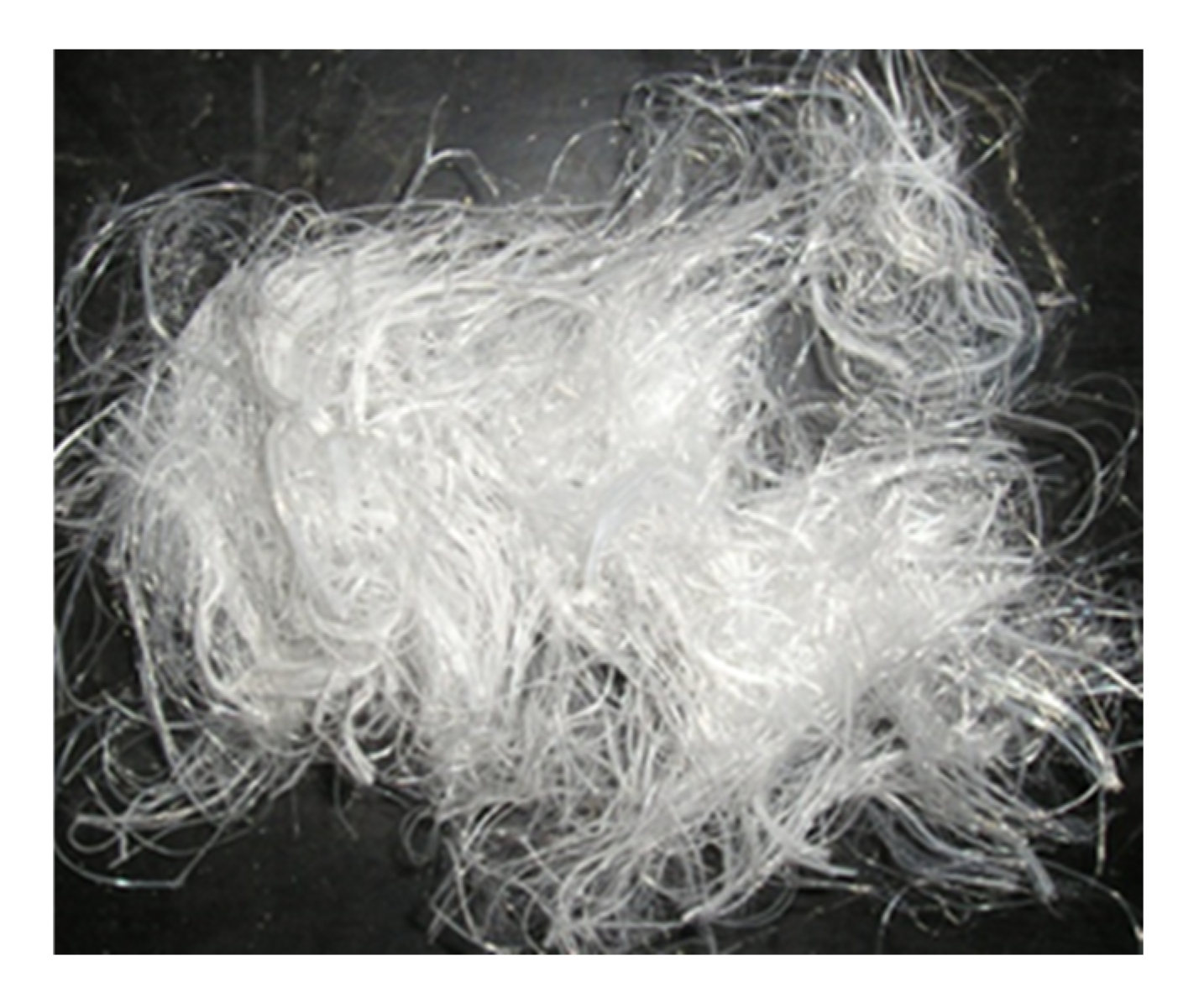
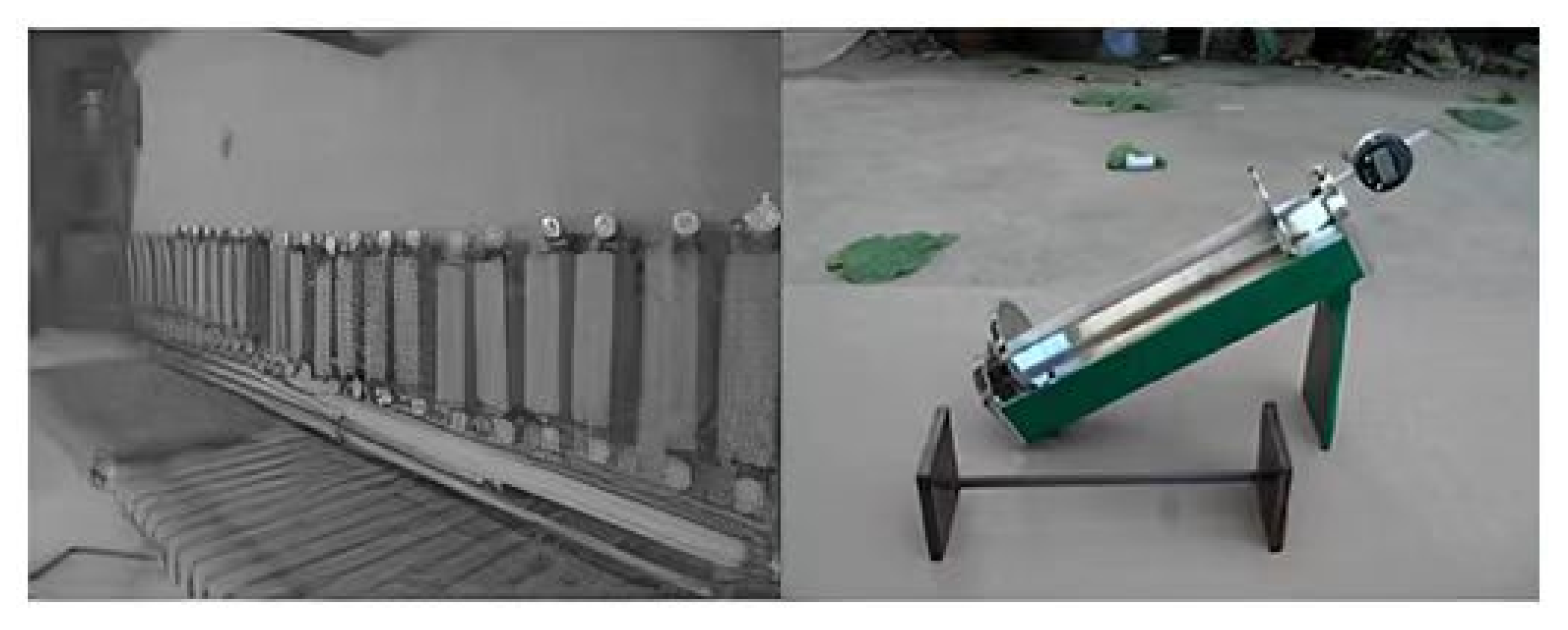
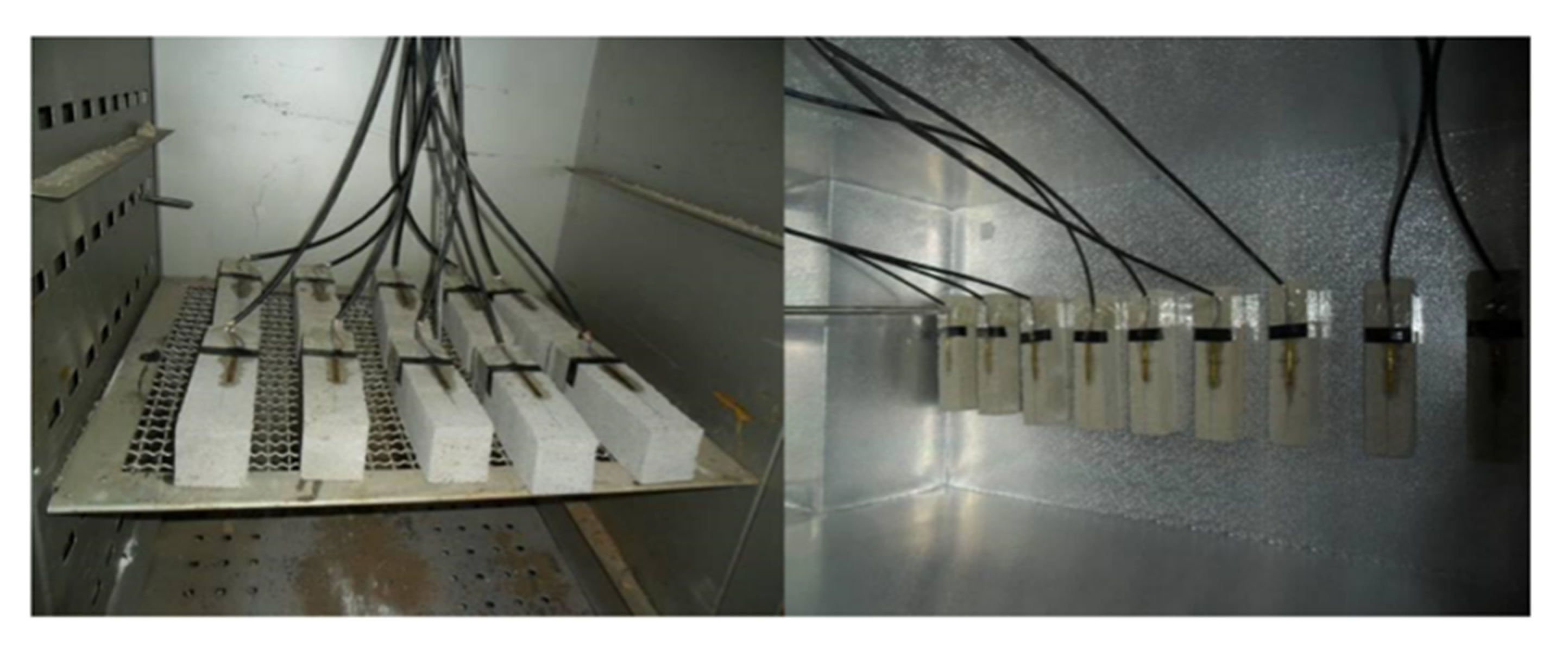

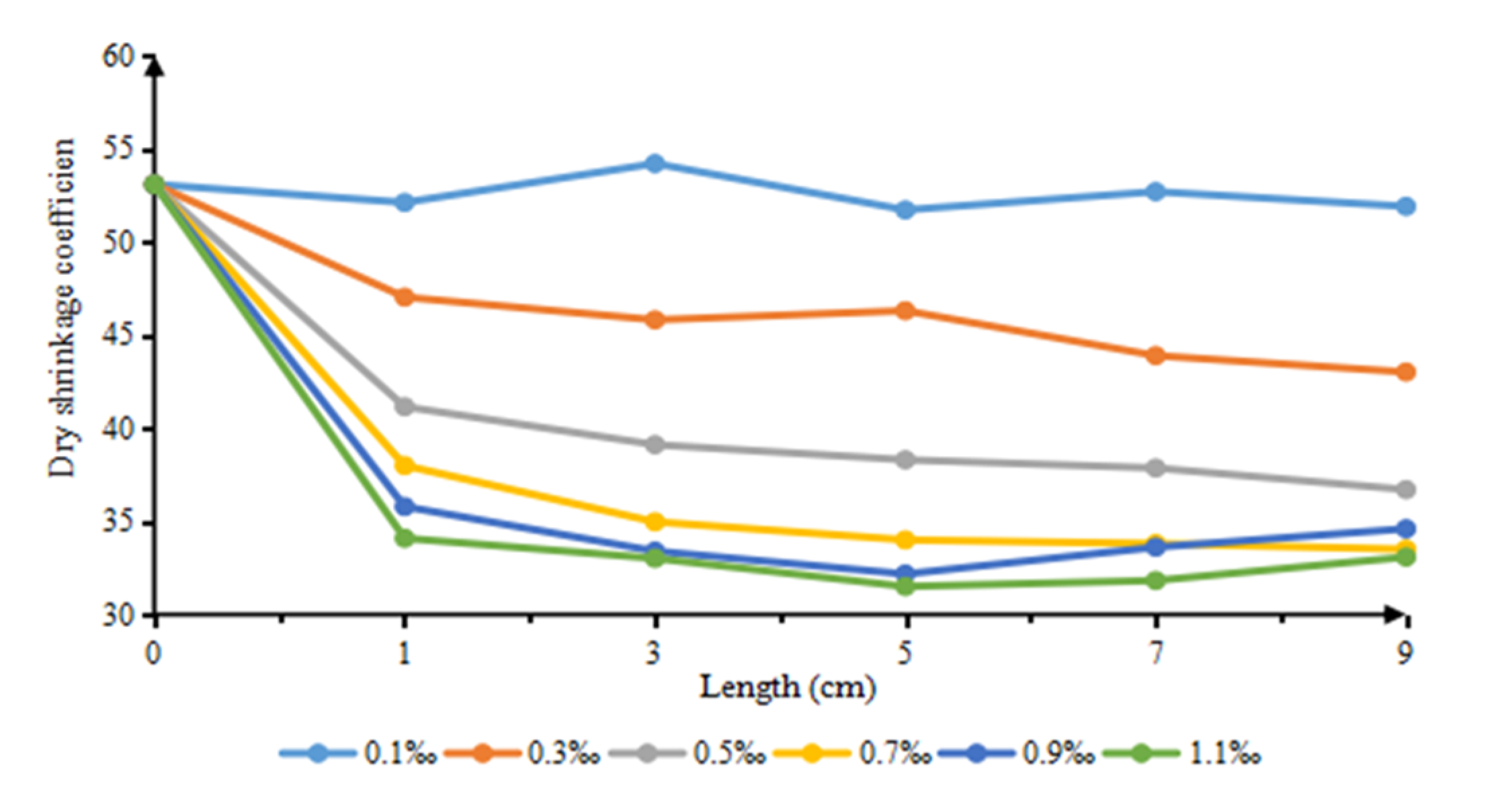
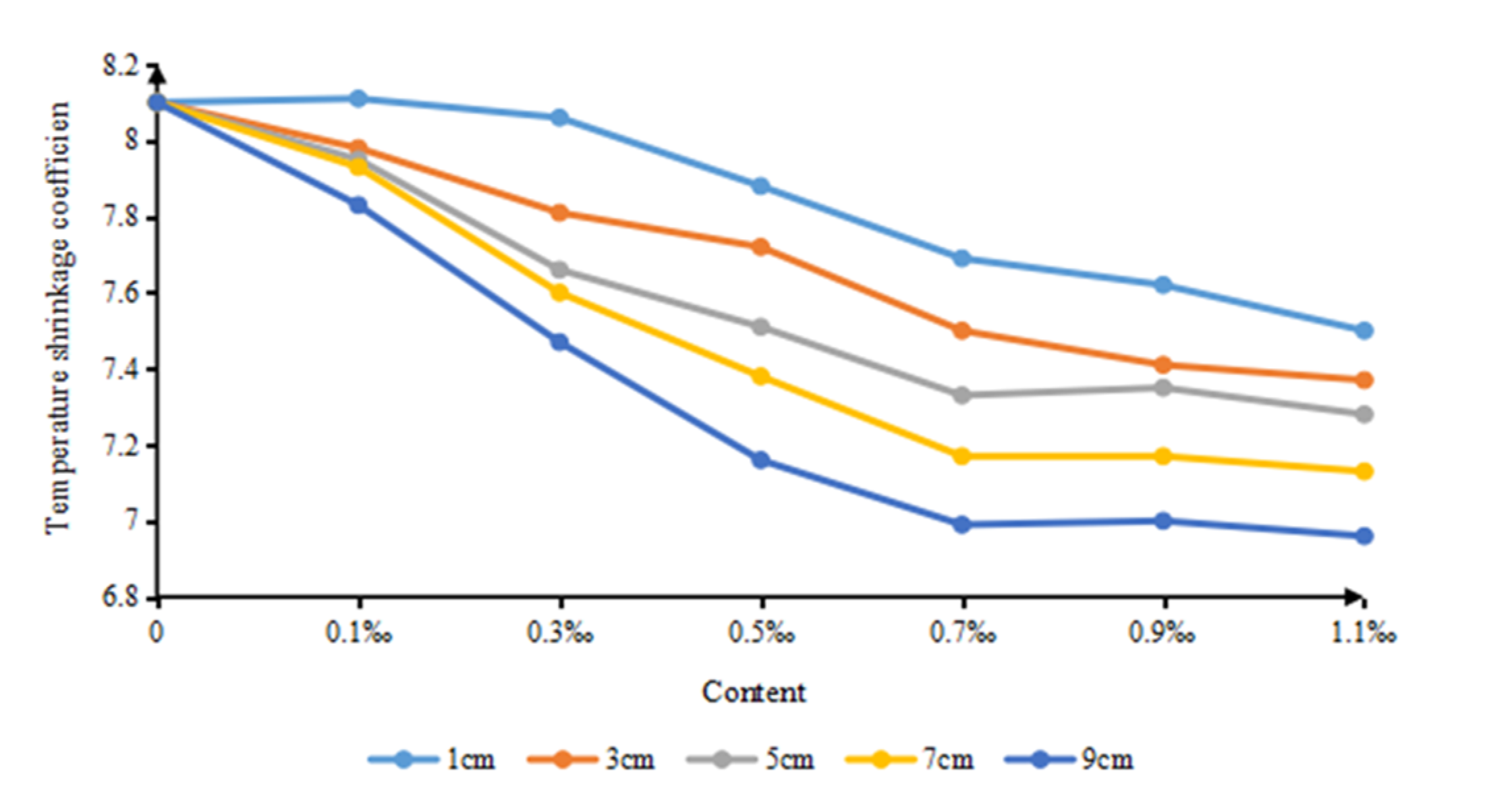

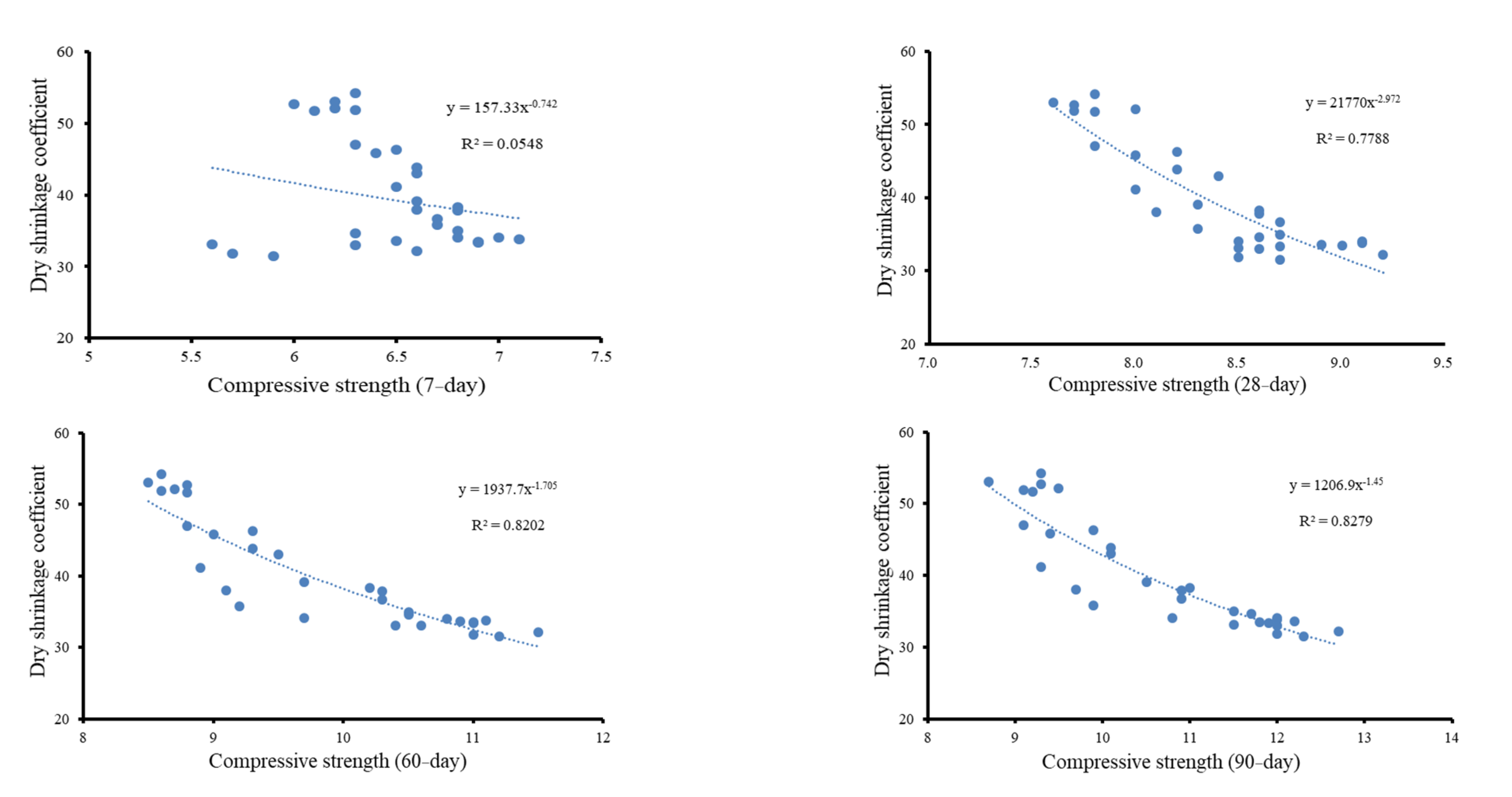
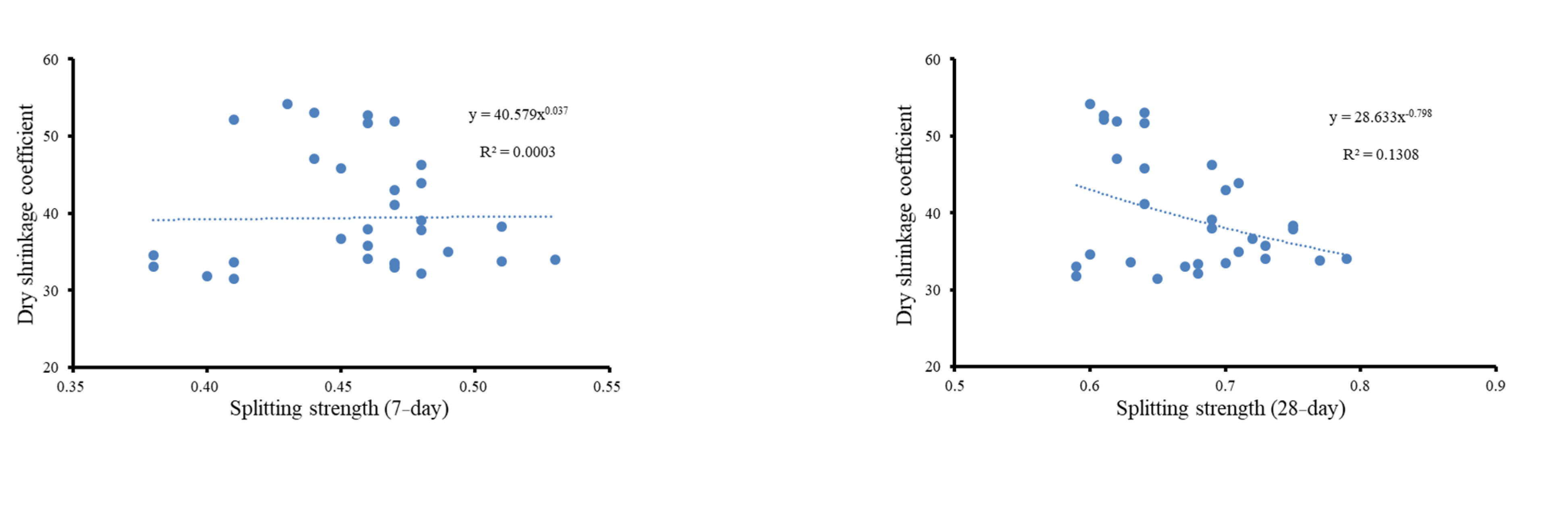


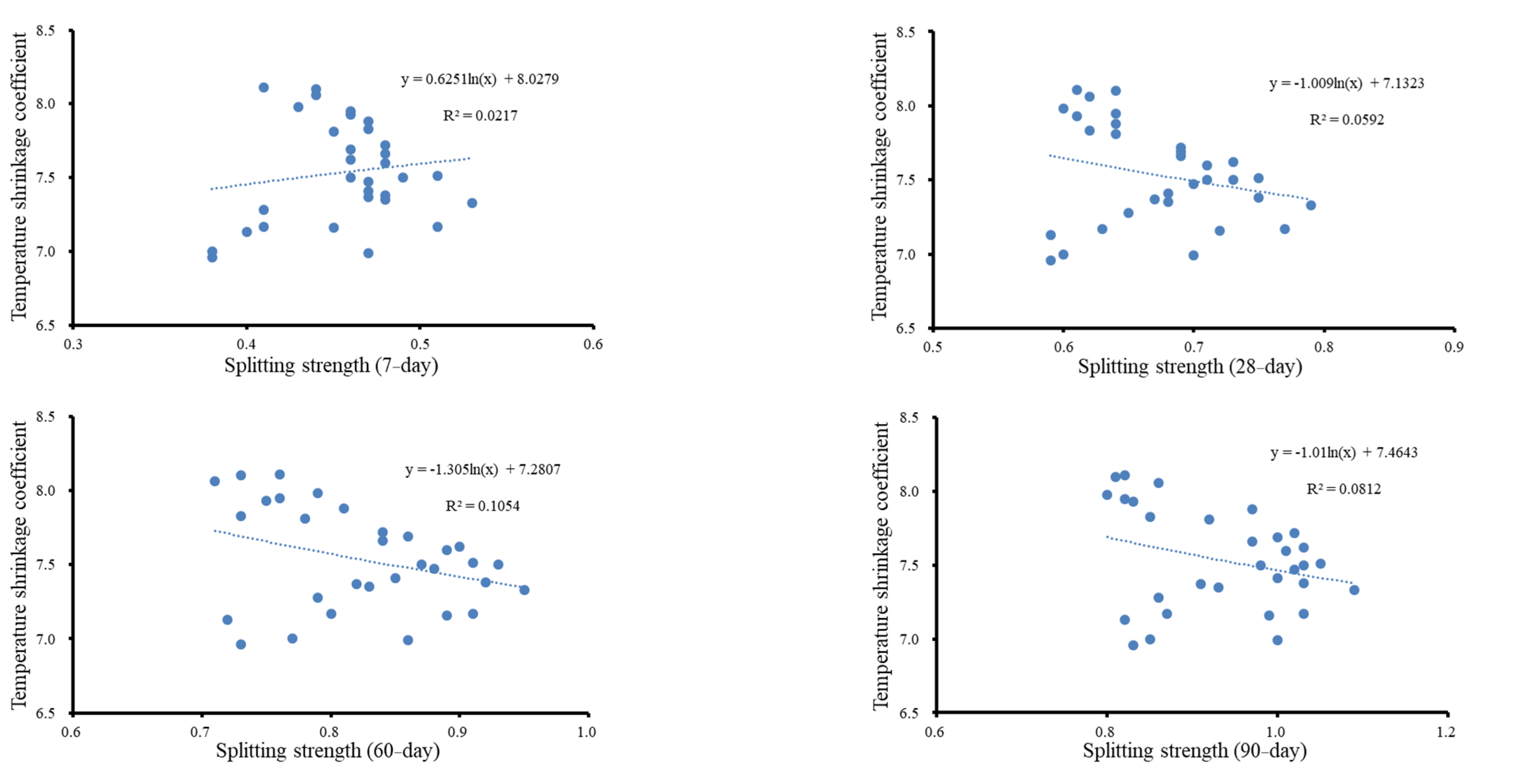
| Specific Gravity (g/cm3) | Melting Point (°C) | Kindle (°C) | Thermal Conductivity | Acid and Alkali Resistance | Strength of Extension (MPa) | Modulus of Elasticity (MPa) | Thermal Expansivity (10−5/°C) |
|---|---|---|---|---|---|---|---|
| 1.22 | >252 | >572 | 0.02 | strong | ≥977 | ≥9000 | 5~6 |
| Stability | Fineness (%) (80 μm Square Hole Screen) | Setting Time (min) | Compressive Strength (MPa) | Flexural Strength (MPa) | |||
|---|---|---|---|---|---|---|---|
| qualified | <10 | Initial set | Final set | 3-day | 28-day | 3-day | 28-day |
| ≥45 | ≥180 | ≥16 | ≥31 | ≥4 | ≥7 | ||
| Coarse Aggregates | Apparent Density (g/cm3) | Los Angeles Abrasion Value (%) | BPN | Crushed Stone Value (%) | Flat-Elongated Particles Content (%) | Water Absorption (%) | |
| 2.881 | 11.6 | 63 | 13.5 | 2.2 | 0.31 | ||
| Fine aggregate | Apparent density (g/cm3) | Angularity (s) | Sand equivalent (%) | Hydrophilic coefficient | |||
| 2.667 | 35 | 75 | 0.61 | ||||
| Mineral powders | Apparent density (g/cm3) | Hydrophilic coefficient | Water content (%) | Heating stability | Particle size (%) | ||
| <0.6 mm | <0.15 mm | <0.075 mm | |||||
| 2.632 | 0.55 | 0.2 | Unchanged | 100 | 99.8 | 81.2 | |
| Sieve Size (mm) | 31.5 | 26.5 | 19 | 9.5 | 4.75 | 2.36 | 0.6 | 0.075 |
| Passing Rate (%) | 100 | 95 | 80 | 55 | 35 | 20 | 10 | 5 |
| Content (‰) | Length (cm) | Unconfined Compressive Strength (Mpa) at the Following Curing Age | |||
|---|---|---|---|---|---|
| 7-Day | 28-Day | 60-Day | 90-Day | ||
| 0 | -- | 6.2 | 7.6 | 8.5 | 8.7 |
| 0.1 | 1 | 6.2 | 8.0 | 8.7 | 9.5 |
| 3 | 6.3 | 7.8 | 8.6 | 9.3 | |
| 5 | 6.1 | 7.8 | 8.8 | 9.2 | |
| 7 | 6.0 | 7.7 | 8.8 | 9.3 | |
| 9 | 6.3 | 7.7 | 8.6 | 9.1 | |
| 0.3 | 1 | 6.3 | 7.8 | 8.8 | 9.1 |
| 3 | 6.4 | 8.0 | 9.0 | 9.4 | |
| 5 | 6.5 | 8.2 | 9.3 | 9.9 | |
| 7 | 6.6 | 8.2 | 9.3 | 10.1 | |
| 9 | 6.6 | 8.4 | 9.5 | 10.1 | |
| 0.5 | 1 | 6.5 | 8.0 | 8.9 | 9.3 |
| 3 | 6.6 | 8.3 | 9.7 | 10.5 | |
| 5 | 6.8 | 8.6 | 10.2 | 11.0 | |
| 7 | 6.8 | 8.6 | 10.3 | 10.9 | |
| 9 | 6.7 | 8.7 | 10.3 | 10.9 | |
| 0.7 | 1 | 6.6 | 8.1 | 9.1 | 9.7 |
| 3 | 6.8 | 8.7 | 10.5 | 11.5 | |
| 5 | 7.0 | 9.1 | 10.8 | 12.0 | |
| 7 | 7.1 | 9.1 | 11.1 | 12.0 | |
| 9 | 6.9 | 9.0 | 11.0 | 11.8 | |
| 0.9 | 1 | 6.7 | 8.3 | 9.2 | 9.9 |
| 3 | 6.9 | 8.7 | 11.0 | 11.9 | |
| 5 | 6.6 | 9.2 | 11.5 | 12.7 | |
| 7 | 6.5 | 8.9 | 10.9 | 12.2 | |
| 9 | 6.3 | 8.6 | 10.5 | 11.7 | |
| 1.1 | 1 | 6.8 | 8.5 | 9.7 | 10.8 |
| 3 | 6.3 | 8.6 | 10.4 | 12.0 | |
| 5 | 5.9 | 8.7 | 11.2 | 12.3 | |
| 7 | 5.7 | 8.5 | 11.0 | 12.0 | |
| 9 | 5.6 | 8.5 | 10.6 | 11.5 | |
| Content (‰) | Length (cm) | Splitting Strength (MPa) at the Following Curing Age | |||
|---|---|---|---|---|---|
| 7-Day | 7-Day | 7-Day | 7-Day | ||
| 0 | -- | 0.44 | 0.64 | 0.73 | 0.81 |
| 0.1 | 1 | 0.41 | 0.61 | 0.76 | 0.82 |
| 3 | 0.43 | 0.60 | 0.79 | 0.80 | |
| 5 | 0.46 | 0.64 | 0.76 | 0.82 | |
| 7 | 0.46 | 0.61 | 0.75 | 0.83 | |
| 9 | 0.47 | 0.62 | 0.73 | 0.85 | |
| 0.3 | 1 | 0.44 | 0.62 | 0.71 | 0.86 |
| 3 | 0.45 | 0.64 | 0.78 | 0.92 | |
| 5 | 0.48 | 0.69 | 0.84 | 0.97 | |
| 7 | 0.48 | 0.71 | 0.89 | 1.01 | |
| 9 | 0.47 | 0.70 | 0.88 | 1.02 | |
| 0.5 | 1 | 0.47 | 0.64 | 0.81 | 0.97 |
| 3 | 0.48 | 0.69 | 0.84 | 1.02 | |
| 5 | 0.51 | 0.75 | 0.91 | 1.05 | |
| 7 | 0.48 | 0.75 | 0.92 | 1.03 | |
| 9 | 0.45 | 0.72 | 0.89 | 0.99 | |
| 0.7 | 1 | 0.46 | 0.69 | 0.86 | 1.00 |
| 3 | 0.49 | 0.71 | 0.93 | 1.03 | |
| 5 | 0.53 | 0.79 | 0.95 | 1.09 | |
| 7 | 0.51 | 0.77 | 0.91 | 1.03 | |
| 9 | 0.47 | 0.70 | 0.86 | 1.00 | |
| 0.9 | 1 | 0.46 | 0.73 | 0.90 | 1.03 |
| 3 | 0.47 | 0.68 | 0.85 | 1.00 | |
| 5 | 0.48 | 0.68 | 0.83 | 0.93 | |
| 7 | 0.41 | 0.63 | 0.80 | 0.87 | |
| 9 | 0.38 | 0.60 | 0.77 | 0.85 | |
| 1.1 | 1 | 0.46 | 0.73 | 0.87 | 0.98 |
| 3 | 0.47 | 0.67 | 0.82 | 0.91 | |
| 5 | 0.41 | 0.65 | 0.79 | 0.86 | |
| 7 | 0.40 | 0.59 | 0.72 | 0.82 | |
| 9 | 0.38 | 0.59 | 0.73 | 0.83 | |
Disclaimer/Publisher’s Note: The statements, opinions and data contained in all publications are solely those of the individual author(s) and contributor(s) and not of MDPI and/or the editor(s). MDPI and/or the editor(s) disclaim responsibility for any injury to people or property resulting from any ideas, methods, instructions or products referred to in the content. |
© 2023 by the authors. Licensee MDPI, Basel, Switzerland. This article is an open access article distributed under the terms and conditions of the Creative Commons Attribution (CC BY) license (https://creativecommons.org/licenses/by/4.0/).
Share and Cite
Wang, J.; Li, M.; Chen, J.; Zhao, Z.; Zhao, H.; Zhang, L.; Ren, J. Investigation on Shrinkage Characteristics of Polyester-Fiber-Reinforced Cement-Stabilized Concrete Considering Fiber Length and Content. Buildings 2023, 13, 1027. https://doi.org/10.3390/buildings13041027
Wang J, Li M, Chen J, Zhao Z, Zhao H, Zhang L, Ren J. Investigation on Shrinkage Characteristics of Polyester-Fiber-Reinforced Cement-Stabilized Concrete Considering Fiber Length and Content. Buildings. 2023; 13(4):1027. https://doi.org/10.3390/buildings13041027
Chicago/Turabian StyleWang, Jian, Min Li, Jingchun Chen, Zedong Zhao, Hongbo Zhao, Lin Zhang, and Jiaolong Ren. 2023. "Investigation on Shrinkage Characteristics of Polyester-Fiber-Reinforced Cement-Stabilized Concrete Considering Fiber Length and Content" Buildings 13, no. 4: 1027. https://doi.org/10.3390/buildings13041027
APA StyleWang, J., Li, M., Chen, J., Zhao, Z., Zhao, H., Zhang, L., & Ren, J. (2023). Investigation on Shrinkage Characteristics of Polyester-Fiber-Reinforced Cement-Stabilized Concrete Considering Fiber Length and Content. Buildings, 13(4), 1027. https://doi.org/10.3390/buildings13041027






